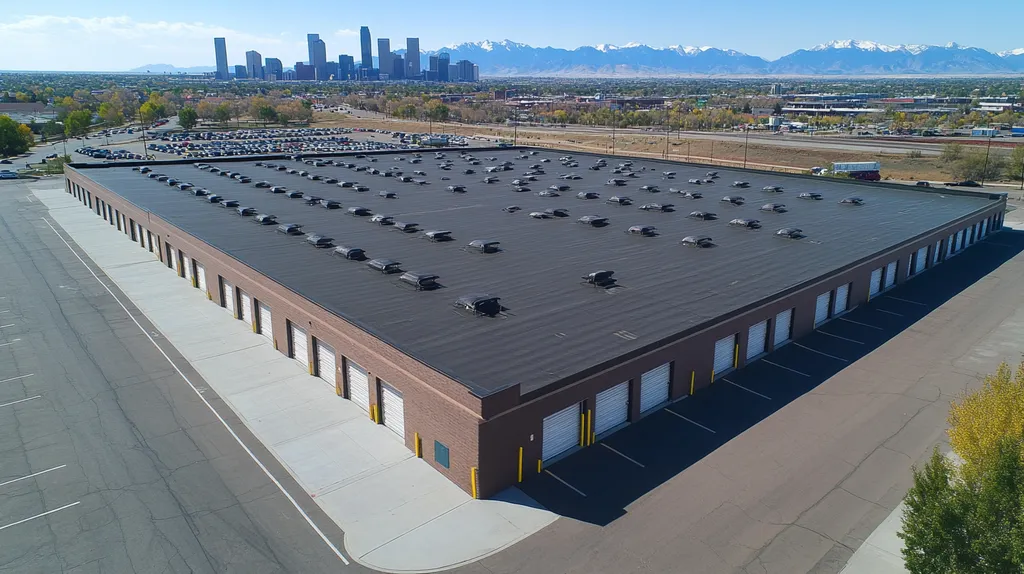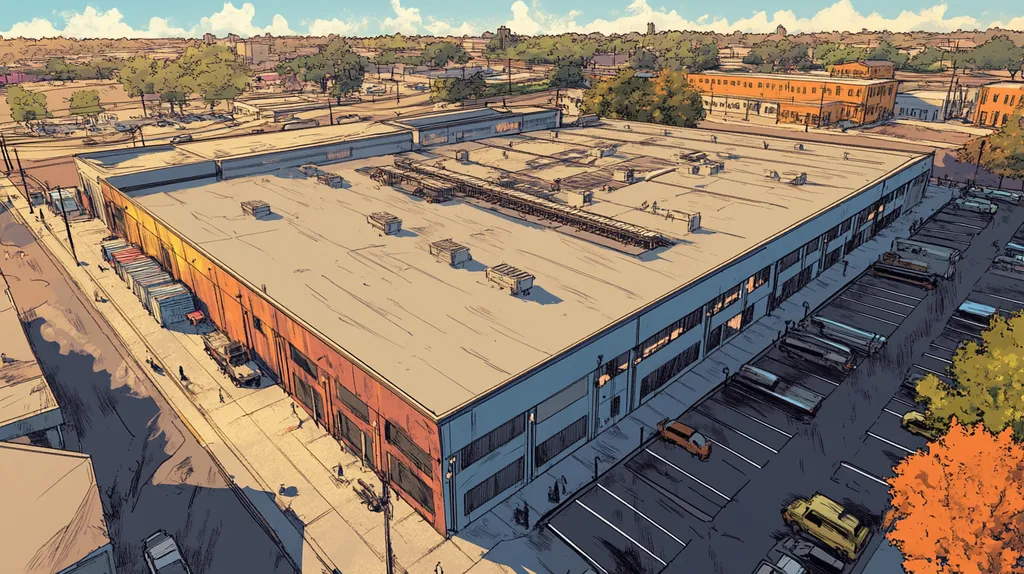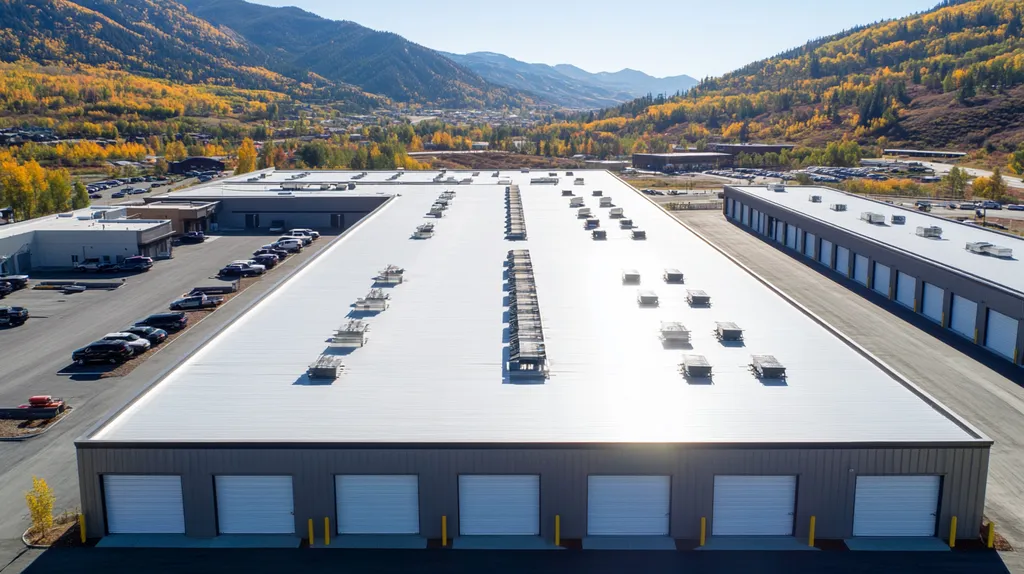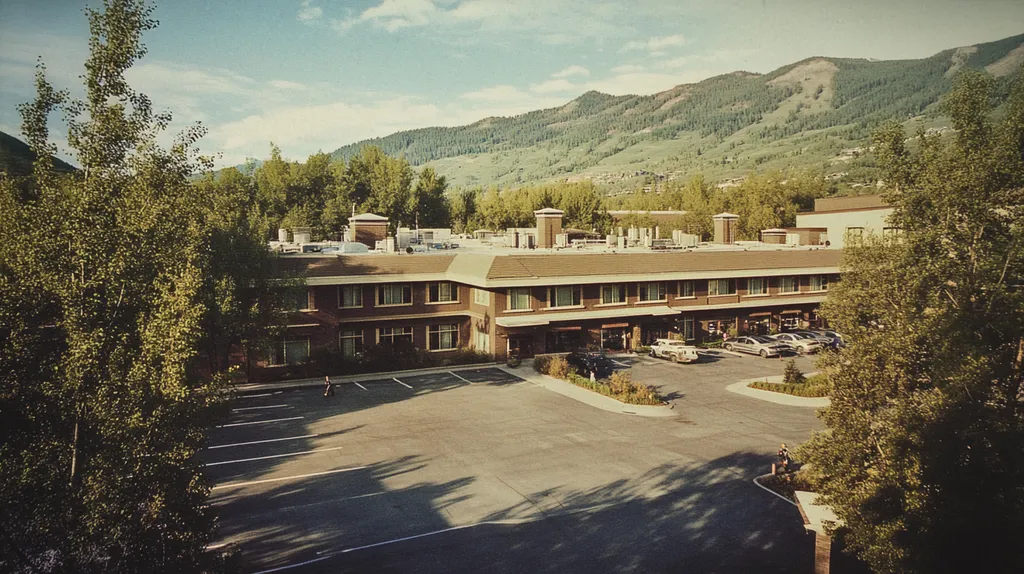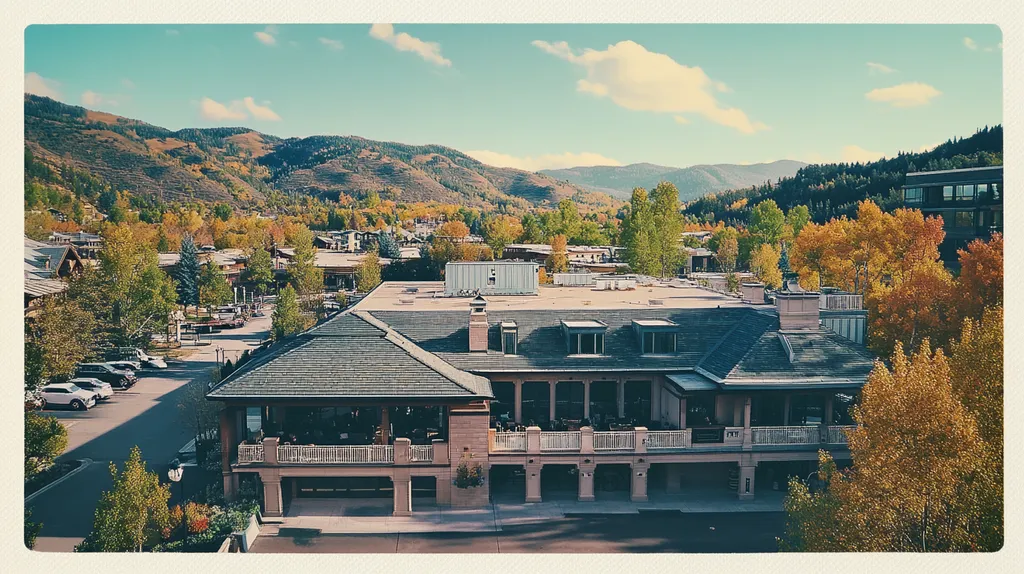Falls from heights remain the leading cause of fatalities in industrial construction, with over 300 deaths reported annually according to OSHA statistics. On industrial roofing projects, climbing hazards pose particularly severe risks due to elevated work areas, complex equipment installations, and varied weather conditions.
For facility managers and property owners, effectively assessing these hazards is crucial for protecting workers and maintaining regulatory compliance. The costs of inadequate safety measures can be devastating – both in human terms and through liability exposure.
This comprehensive guide examines the critical components of climbing hazard assessment, from fundamental safety concepts through advanced implementation strategies that safeguard industrial roofing operations.
SECTION 1: FUNDAMENTAL CONCEPTS
Climbing hazards on industrial roofing jobs pose significant risks, often leading to severe injuries or fatalities among workers. Alarmingly, falls continue to be a leading cause of workplace deaths, particularly in the construction sector, as reported by the Occupational Safety and Health Administration (OSHA). Therefore, effectively assessing these hazards is paramount for promoting safe roofing practices and safeguarding workers.
This section delves into the core concepts of hazard identification and assessment, outlines the risk management process, and provides an overview of the regulatory compliance requirements pertinent to industrial roofing. A solid understanding of these concepts is crucial for property owners and facility managers aiming to cultivate a culture of safety within their operations.
Hazard Identification and Assessment
Spotting potential climbing hazards is the essential first step in ensuring safety on rooftops. Hazards may include unstable surfaces, proximity to edges, and environmental factors, such as wind. Conducting comprehensive site evaluations enables property owners to identify these dangers before any roofing work commences.
Employers must also take into account the specific characteristics of the roofing structure. For instance, sloped roofs may necessitate additional fall protection measures compared to flat roofs. Creating a clear picture of potential risks is vital to minimize accidents.
Employing tools like safety checklists and hazard maps can significantly enhance the identification process. Regular inspections coupled with employee feedback should become part of the assessment, fostering continuous improvement of safety protocols.
Recognizing climbing hazards empowers informed decision-making regarding necessary safety gear and training for workers. Adopting these strategies can ultimately decrease the likelihood of incidents, thereby protecting personnel and property alike.
Risk Management Process
The risk management process is a systematic approach to identifying, assessing, and mitigating risks associated with climbing hazards. It begins with risk assessment, where the likelihood and potential severity of incidents are thoroughly analyzed.
Once hazards are recognized, prioritizing them based on their risk levels enables effective allocation of resources. High-risk situations, such as the potential for falls, may require immediate action and specific safety measures, such as guardrails or harness systems, to counteract these threats.
Next, developing and implementing control measures is essential to minimize the identified risks. This could involve training personnel in proper climbing techniques or providing appropriate equipment that enhances safety.
Lastly, ongoing monitoring and review of risk management strategies ensure their continued effectiveness. By regularly updating assessments and control measures, organizations can adapt to any changes in working conditions, maintaining a proactive approach to safety.
Regulatory Compliance Overview
Understanding and adhering to regulations is vital for ensuring safety in industrial roofing jobs. OSHA sets forth essential guidelines that outline employer responsibilities regarding worker safety, including the implementation of proper fall protection measures.
Property owners and facility managers must remain informed about regulations applicable to their specific roofing projects. Failing to comply can result in hefty fines, legal repercussions, and increased accident risks.
Regular training and updates on regulatory changes are crucial to ensure all personnel understand their responsibilities under current laws. Employers should document safety measures and employee training to demonstrate compliance effectively.
In summary, familiarizing oneself with regulatory frameworks allows property managers to foster a safer work environment and protect their investments in roofing installations.
SECTION 2: SYSTEM COMPONENTS
Assessing climbing hazards on industrial roofing jobs is of utmost importance for ensuring safety and regulatory compliance. Insufficient fall protection can result in serious injuries or even fatalities, with falls from heights responsible for about one-third of all workplace deaths. Property owners and facility managers must comprehend the key components of a safe roofing system, including edge protection, fall arrest systems, and the materials used in roofing. This section will discuss these vital elements to facilitate effective hazard assessment.
Edge Protection and Guardrails
Edge protection and guardrails are essential components of any roofing safety strategy. These structures are specifically designed to prevent workers from falling off the roof’s edge, one of the most serious climbing hazards. When correctly installed, guardrails act as a crucial physical barrier that significantly enhances worker safety.
Employers should ensure that guardrails conform to established industry standards, which include specific height and stability requirements. For instance, guardrails must typically be a minimum of 42 inches high and include mid-rails to prevent falls through gaps. Regular inspections are critically important to verify their integrity and effectiveness.
In addition to standard guardrails, movable edge protection systems are gaining popularity. These flexible solutions provide safety while allowing workers to maneuver more freely. However, it is essential to secure these systems properly before commencing any work.
Implementing a comprehensive edge protection strategy can greatly reduce risks, resulting in fewer accidents and safeguarding both workers and the facility’s operations.
Fall Arrest and Restraint Systems
Fall arrest and restraint systems play a crucial role in protecting workers performing tasks at heights. These systems, which include harnesses and lanyards, are engineered to either catch a worker during a fall or prevent them from reaching the edge in the first place. Proper knowledge of their use is critical; it can truly be the difference between life and death.
Facility managers must prioritize training sessions centered on the correct usage of these safety devices. Workers should be educated on how to inspect their equipment before each use, and how to don it properly for maximum protection.
Furthermore, consistent maintenance of fall protection equipment is vital. Equipment deterioration over time can lead to catastrophic failures in emergencies, making scheduled inspections and adherence to manufacturer guidelines crucial.
By effectively implementing fall arrest and restraint systems, not only are workers protected, but property owners also reduce their liability, reinforcing a culture of safety that is vital in the industrial sector.
Roofing Material and Structural Integrity
The choice of roofing material and the overall structural integrity of the roof are key factors in evaluating climbing hazards. Weak or failing roofing may elevate the risk of slips and falls, especially under inclement weather conditions. Regular evaluations of roofing materials for wear and deterioration are essential.
Facility managers should examine the suitability of materials according to their specific environmental conditions. For example, roofing membranes dependent on favorable weather conditions might fail when exposed to harsh elements over time, creating climbing hazards.
Conducting routine roof inspections can identify structural vulnerabilities or material failures before they result in accidents. Investing in high-quality materials and consistently maintaining them can prevent costly accidents while extending the overall lifespan of the roof.
Understanding the connection between roofing materials and climbing hazards is vital for property owners. A well-maintained roof promotes safer working conditions and enhances the overall value and functionality of the facility.
SECTION 3: IMPLEMENTATION METHODS
Assessing climbing hazards on industrial roofs is critical for ensuring worker safety and preventing legal and financial repercussions. According to the Occupational Safety and Health Administration (OSHA), falls remain one of the leading causes of injuries and fatalities in the construction industry. Therefore, developing and executing a robust plan that addresses access points and identifies hazards is essential. This section outlines fundamental implementation methods needed to establish a safe working environment on industrial roofs.
Access Point and Perimeter Safety
Access points serve as vital gateways to safety on industrial roofs. Establishing clear and secure pathways to these points can greatly reduce climbing hazards. For instance, dependable ladders and designated entry points help prevent slips and falls during the transition onto the roof surface.
Perimeter safety measures are equally important. Implementing guardrails, warning lines, and toe boards creates a safety buffer to protect workers from potential falls. Conducting regular inspections ensures these safety features remain functional and comply with necessary regulations.
Additionally, appropriate signage at access points enhances awareness of hazards and guidelines. This is particularly important for both new and experienced workers navigating complex roof systems.
By maintaining a structured approach to access points and perimeter safety, businesses can foster a supportive environment for roof workers, significantly enhancing safety while reducing liability risks for property owners.
Navigation and Obstruction Management
Effective navigation on industrial roofs hinges on thorough planning and proactive management of obstructions. Equipment such as ducts and mechanical units can become climbing hazards if not properly identified. Conducting a comprehensive assessment allows for mapping potential obstacles accurately.
A clear navigation plan empowers workers to traverse roofs safely without unnecessary hazards. Designating pathways through paint markings and creating access routes streamlines movement and diminishes risks.
Regular training on obstruction management is crucial. Workers need to be informed about possible hazards and trained in safe practices for working around them. Fostering a culture of safety is instrumental in enhancing overall roof safety.
Utilizing advanced technologies like drones or virtual reality simulations can further aid workers in visualizing hazards ahead of time, enhancing awareness and preparedness.
Suspended Access and Elevated Platforms
Suspended access solutions, including scaffolding and aerial work platforms, are pivotal for managing climbing hazards on industrial roofs. These tools provide stable support, allowing workers to operate safely at height while mitigating fall risks. When properly installed, these systems can greatly enhance safety across various roofing tasks.
It is essential for property owners to schedule routine inspections and maintenance for these elevated platforms. Consistent checks ensure the reliability and safety of all suspended systems, offering peace of mind to management and workers alike.
Training staff to use these platforms effectively is also imperative. Educating workers on the correct usage and limitations of equipment empowers them to operate safely, resulting in a significant reduction in accidents.
In summary, investing in suspended access and elevated platforms not only streamlines work processes but also prioritizes worker safety. This approach ultimately bolsters productivity and enhances the reputation of industrial roofing operations.
SECTION 4: MAINTENANCE REQUIREMENTS
Regular maintenance on industrial roofs is crucial for ensuring worker safety and extending the roof’s lifespan. Alarmingly, studies reveal that 30% of roof-related accidents stem from poor maintenance practices. Neglecting the assessment of climbing hazards not only endangers workers but can also lead to significant repair costs and legal liabilities. This section focuses on the essential aspects of maintenance, including the necessity of inspections, the upkeep of safety equipment, and the influence of environmental factors.
Regular Inspection and Monitoring
Conducting regular inspections is essential for spotting climbing hazards before they escalate. Industrial roofs should be evaluated comprehensively at least twice a year and after severe weather events. Facility managers need to ensure that their teams are trained to identify early signs of deterioration, such as cracks or excessive debris buildup.
Documenting the findings from inspections is vital as it helps track the roof’s condition over time. This information can highlight areas requiring immediate attention or targeted maintenance. Additionally, hiring a qualified roofing contractor for these assessments can bring a professional perspective to potential hazards.
The use of drones for roof inspections is an innovative trend that can enhance safety. Drones can access difficult-to-reach areas without putting personnel at risk, while also providing critical data. Consistent monitoring allows facilities to maintain a proactive maintenance plan, effectively reducing climbing hazards.
Ultimately, persistent monitoring not only safeguards workers but also aids in efficiently scheduling maintenance tasks, thus minimizing unforeseen expenses associated with emergency repairs.
Maintenance of Safety Equipment
Safety equipment is vital in protecting workers from climbing hazards on industrial roofs. Regular inspections and maintenance of fall protection gear, harnesses, and ladders are necessary to ensure they function correctly. Equipment that is not well-maintained can lead to preventable accidents, putting lives at risk.
Facilities managers should create a routine inspection schedule for safety gear, which includes checking for any signs of wear and ensuring all components are operational. Appointing a dedicated safety officer can help establish accountability, making certain that equipment is consistently assessed.
Additionally, training employees on both the proper use and maintenance of safety equipment is essential. Regular training sessions can ensure that workers are aware of how to utilize their gear effectively and recognize the signs of wear or failure. This proactive measure fosters a culture of safety within the organization.
By emphasizing the upkeep of safety equipment, organizations can considerably lower the risks associated with climbing hazards, resulting in a more secure working environment.
Addressing Weather and Environmental Factors
Weather and environmental conditions can significantly increase risks for workers on industrial roofs. Snow, ice, strong winds, and heavy rain create hazardous conditions that elevate the chances of accidents. A thorough understanding of these factors is critical for planning maintenance and inspections accordingly.
Facilities managers should develop clear guidelines for working during adverse weather conditions. For example, delaying work during severe rain or snowstorms is a prudent measure to prevent falls and injuries. Conducting regular weather assessments can support these decisions and enhance workforce protection.
Furthermore, implementing proactive measures such as systems for ice and snow removal can minimize risks associated with hazardous accumulations. Proper drainage solutions are also essential, as they prevent water pooling, which can create stability hazards.
Incorporating weather-resistant materials in roofing design can provide long-term safety benefits. Such materials are better equipped to withstand harsh conditions and can lower maintenance requirements, contributing to a safer working environment.
SECTION 5: PERFORMANCE METRICS
In the industrial roofing sector, the stakes of climbing hazards cannot be overstated. Falls account for nearly 30% of all fatalities in the construction industry, as highlighted by the Occupational Safety and Health Administration (OSHA). This alarming statistic underscores the importance of establishing rigorous performance metrics to evaluate and manage these risks effectively. Key performance indicators—such as incident reporting, compliance audits, and worker training—are essential for reducing the hazards associated with roofing work. By focusing on these elements, property owners and facility managers can enhance safety for their workforce and uphold the integrity of their operations.
Incident Reporting and Analysis
Implementing an effective incident reporting system is crucial for identifying climbing hazards before they result in injuries. This system should document not only accidents but also near misses that can reveal underlying safety deficiencies. For instance, if a worker slips but does not fall, that incident can indicate areas needing improvement in safety protocols or equipment.
Analyzing incident reports is essential for preventing future occurrences. By identifying patterns, such as specific rooftop locations prone to slips, management can take corrective actions—such as enhancing training or upgrading safety measures. Continuous data collection facilitates the development of a safety-first culture within the organization.
Moreover, regularly reviewing incident reports allows lessons learned to be integrated into ongoing safety programs. This proactive approach can considerably lower the frequency of climbing-related incidents. Companies that utilize rigorous reporting mechanisms often see a reduction in workplace accidents by up to 40%.
In summary, effective incident reporting and analysis are vital components of a robust safety strategy, protecting workers while enhancing overall productivity and morale in the organization.
Compliance Audits and Inspections
Conducting compliance audits and inspections is essential for ensuring a safe climbing environment on industrial roofs. These evaluations confirm that safety protocols adhere to the regulatory standards set by OSHA and other governing bodies. Regular inspections help identify areas lacking essential safety measures, such as inadequate guardrails or insufficient personal protective equipment.
Routine audits serve not only as a regulatory requirement but also as best practices for hazard identification. If an audit reveals improper use of fall protection systems, immediate corrective actions can be executed to avert accidents. This proactive stance fosters accountability among workers.
The frequency and thoroughness of these audits directly affect the overall safety culture. Companies that routinely conduct audits are 20% more likely to comply with safety regulations, leading to fewer accidents and potential lawsuits. This approach protects workers and reinforces the company’s financial health.
Establishing a systematic framework for compliance audits and inspections is fundamental for efficiently assessing climbing hazard risks and ensuring ongoing adherence to safety standards.
Worker Training and Competency
Robust training programs focused on climbing safety are vital for preparing workers to handle risks associated with industrial roofing. A well-educated workforce understands the role of personal protective equipment (PPE) and safe climbing techniques. Training modules should cover the proper use of harness systems and emphasize maintaining three points of contact while climbing.
Competency assessments following training ensure that workers can effectively apply their learned skills. Regular refresher courses help maintain awareness regarding climbing hazards. Companies committed to continuous training frequently report a significant decrease in climbing-related accidents.
Investing in innovative training technologies, such as virtual reality simulations, can further enhance workers’ understanding of potential hazards. Simulating realistic scenarios enables workers to recognize and respond to climbing risks appropriately, leading to safety readiness improvements up to 30%.
In conclusion, effective training and competency measures are crucial for fostering a safe climbing environment on industrial roofs. These initiatives not only prepare workers to confront hazards confidently but also encourage a culture of safety and responsibility across the organization.
SECTION 5: PERFORMANCE METRICS
Climbing hazards in industrial roofing present urgent challenges that can significantly endanger worker safety and disrupt operations. With falls responsible for nearly 30% of fatalities in the construction industry, as reported by the Occupational Safety and Health Administration (OSHA), robust performance metrics are crucial for managing these risks effectively. Essential indicators like incident reporting, compliance audits, and comprehensive worker training are instrumental in mitigating hazards associated with roofing work. By focusing on these critical areas, property owners and facility managers can create a safer environment for their workforce while preserving the integrity of their operations.
Incident Reporting and Analysis
A robust incident reporting system is vital for pinpointing climbing hazards before they lead to injuries. This system should record not only accidents but also near misses, offering insights into potential risks. For instance, a slip that does not result in a fall could highlight deficiencies in safety measures or training protocols that must be addressed.
Analyzing these reports is crucial for preventing future incidents. By spotting trends—such as locations that frequently see slips—management can implement targeted improvements, whether enhancing training or updating safety equipment. Consistent collection of data reinforces a culture of safety throughout the organization.
Moreover, regular reviews of incident reports ensure that lessons learned are integrated into ongoing safety initiatives. This proactive method can significantly decrease the rate of climbing-related incidents. Research indicates that companies utilizing rigorous reporting practices can experience up to a 40% reduction in workplace accidents.
Ultimately, effective incident reporting and analysis are foundational to a strong safety strategy. They serve to protect workers while simultaneously enhancing overall organizational productivity and morale.
Compliance Audits and Inspections
Regular compliance audits and inspections play a crucial role in maintaining a safe climbing environment on industrial roofs. These evaluations ensure adherence to the safety protocols mandated by OSHA and other regulatory bodies. Frequent inspections help identify safety gaps, like insufficient guardrails or inadequate personal protective equipment, which could lead to serious accidents.
Conducting thorough audits routinely is not merely a regulatory obligation; it also represents best practices for hazard identification. For example, an audit revealing improper use of fall protection systems allows for immediate corrective measures to be taken, reinforcing accountability among all workers.
Moreover, the frequency and thoroughness of these audits have a direct impact on establishing a safety-oriented culture. Companies that conduct regular audits can be 20% more likely to comply with safety regulations, which directly translates to fewer incidents and reduced potential for lawsuits. This not only increases worker safety but also upholds the financial stability of the company.
Consequently, establishing a systematic framework for compliance audits and inspections is crucial for effectively assessing climbing hazards and ensuring that safety standards are continuously upheld.
Worker Training and Competency
A comprehensive training program centered on climbing safety is essential for equipping workers with the knowledge needed to navigate risks associated with industrial roofing. When workers are educated about the importance of personal protective equipment (PPE) and safe climbing practices, they are better prepared to handle hazardous situations. Training modules should cover essential skills, such as the proper use of harness systems, as well as the necessity of maintaining three points of contact while climbing.
Competency assessments after training sessions help to confirm that workers can effectively apply their skills on the job. Regular refresher courses also maintain a heightened awareness of climbing hazards, creating continuous improvement in safety culture. Companies that commit to ongoing training often see a notable decline in climbing-related accidents.
Additionally, integrating innovative technologies such as virtual reality simulations into training can enhance workers’ understanding of risks. By immersing trainees in realistic scenarios, they can learn to recognize and respond to climbing hazards more effectively. Evidence suggests that such advanced training methods can increase safety readiness by up to 30%.
In summary, effective training and competency strategies are vital for fostering a secure climbing environment on industrial roofs. They prepare workers to approach hazards with confidence and contribute to a broader culture of safety and accountability within the organization.
Moving Forward
With climbing-related fatalities continuing to claim over 300 lives annually in industrial settings, the imperative for comprehensive hazard assessment has never been greater.
The financial impact of inadequate safety measures often exceeds $1 million per incident when combining medical costs, legal settlements, and operational disruptions.
Property owners and facility managers must recognize that effective climbing hazard assessment encompasses multiple integrated components: thorough inspection protocols, proper safety equipment maintenance, comprehensive worker training, and rigorous compliance monitoring.
By implementing the strategies outlined in this guide, organizations can significantly reduce climbing risks while fostering a culture of safety that protects both workers and bottom-line operations.
The cost of inaction far exceeds the investment required for proper safety measures – making climbing hazard assessment not just a regulatory requirement, but a business imperative.
FREQUENTLY ASKED QUESTIONS
Q. What are climbing hazards on industrial roofs?
A. Climbing hazards refer to risks such as unstable surfaces, proximity to edges, and environmental conditions that can lead to falls. Understanding these risks is vital for promoting safe working practices on roofs, ultimately protecting workers and reducing potential liabilities.
Q. How does edge protection enhance safety for commercial roofs?
A. Edge protection, including guardrails, serves as a physical barrier to prevent workers from falling off the roof edge. Proper installation and maintenance of these barriers are crucial in enhancing overall safety, thereby reducing the risk of serious injuries during roofing tasks.
Q. Why are regular inspections important for industrial roofs?
A. Regular inspections allow for the timely identification of climbing hazards and deterioration before they escalate into serious issues. Consistent monitoring is essential for maintaining safety standards and prolonging the lifespan of the roofing system.
Q. How can I manage weather-related hazards on industrial roofs?
A. Implementing clear guidelines for working during adverse weather is important. This includes delaying work during severe conditions, removing snow and ice regularly, and ensuring proper drainage. Such precautions greatly reduce the likelihood of accidents due to hazardous weather.
Q. What role does worker training play in climbing hazard prevention?
A. Worker training is crucial for educating staff about climbing hazards and the proper use of safety equipment. Regular training sessions ensure workers are prepared to comply with safety protocols and effectively respond to potential risks, thereby significantly reducing incidents.
Q. What are compliance audits for industrial roofing?
A. Compliance audits are systematic evaluations to ensure that roofing safety protocols align with regulatory standards. These audits help identify safety gaps and ensure ongoing adherence to regulations, fostering accountability and reducing accident risks in the workplace.
Q. How do incident reports contribute to climbing safety?
A. Incident reports help identify trends in climbing hazards by documenting accidents and near misses. Analyzing these reports allows management to address deficiencies in safety protocols and implement necessary changes to enhance overall worker safety and reduce future incidents.

